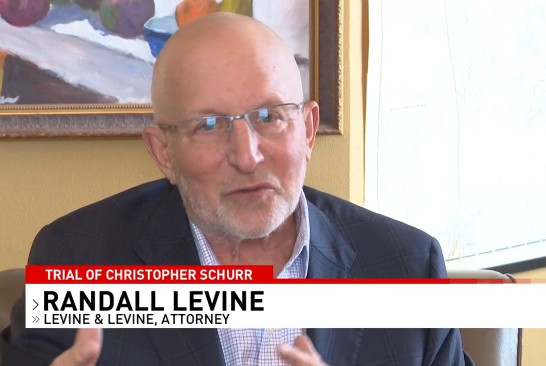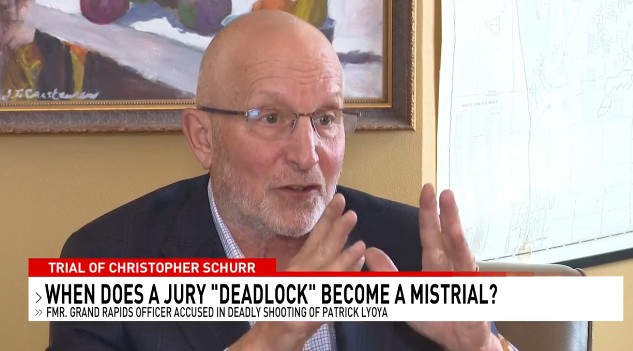
Following the jury's announcement of a deadlock in the trial of ex-Grand Rapids Police officer Christopher Schurr, accused of murdering Patrick Lyoya during a traffic stop in April 2022, on Tuesday, May 6, Managing Partner Randall Levine told WWMT-News Channel 3 that it is entirely up to the judge when to call it a mistrial.
The announcement of the jury deadlock came after nearly 11 hours of deliberations. Judge Christina Mims then addressed the jury’s deadlock declaration, urging jurors to further deliberate with each other and continue to try for a unanimous decision: “It is your duty to consult with your fellow jurors and try to reach agreement. If you can do so without violating your own judgment to return a verdict.”
The defense then made a third motion for mistrial, which Mims subsequently denied, saying jurors had not deliberated long enough for that to be appropriate.
Schurr faces charges of second-degree murder or a recently-proposed, lesser charge of voluntary manslaughter. The ex-GRPD officer could also be found innocent by reason of self-defense.
Levine, who is not involved in the Schurr trial, told News Channel 3 that the court is not permitted to inquire about the specifics behind a deadlock, but said the judge will use her discretion based on limited information from the jury's foreperson.
“Without telling me what you're talking about, where are you in your division? Are you 6 to 6? Are you 10 to 2?” Levine said in his interview, describing how a judge assesses the potential for progress toward a unanimous agreement.
The judge’s instruction to continue to work through the declared deadlock is colloquially known as the “dynamite instruction,” according to Levine, and is a standard urging for jurors to try harder to reach a compromise without compromising their beliefs.
Levine noted that in high-profile cases like this, it is not uncommon for juries to deliberate for several days. He also mentioned that the addition of a voluntary manslaughter charge could encourage compromise among opposing jurors.
To find Schurr guilty of second-degree murder, the jury must find that he intended to kill or do great bodily harm to Lyoya by shooting him, and that it was not justified or excused by other circumstances. That conviction comes with a sentence of life in prison with an option for parole.
To be convicted of voluntary manslaughter, the jury must find that Schurr killed Lyoya out of impulse and emotion, without having time to calm down first. For that, Schurr could face up to 15 years in prison, according to Michigan law.
For an acquittal, or “not guilty” verdict, the jury must vote that Schurr acted in self-defense or that there was not enough evidence brought forth by the state to charge him without doubt, Levine said.
“It's up to the jury to decide unanimously which of the three (verdicts) it is,” Levine told WWMT. “And if they can't agree, that's where we get a deadlock and that results in a mistrial.”
Despite the presently hung jury, Levine expressed confidence that a verdict will be reached.
So far, the jury has not submitted any follow-up questions during deliberations, a practice that has become more common since jurors were allowed to ask questions during trials about a decade ago, according to Levine. Judge Mims reminded the jury on Tuesday that this option is available.
Jury deliberations continued throughout the day on Wednesday, May 7.
Watch the full interview, here.


